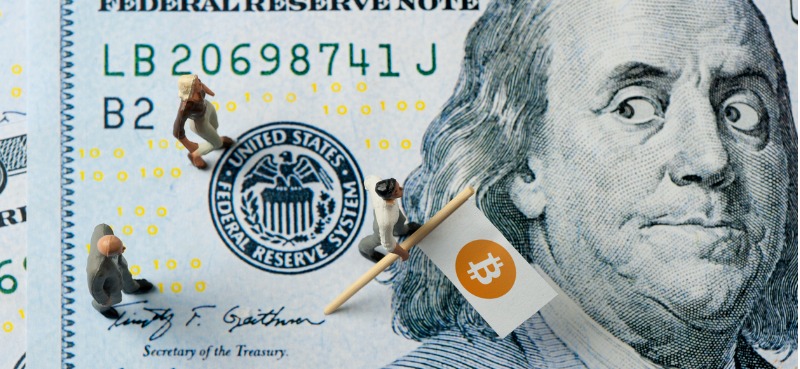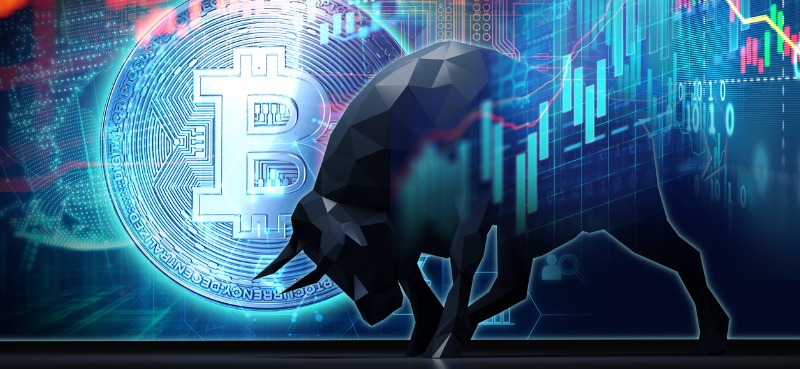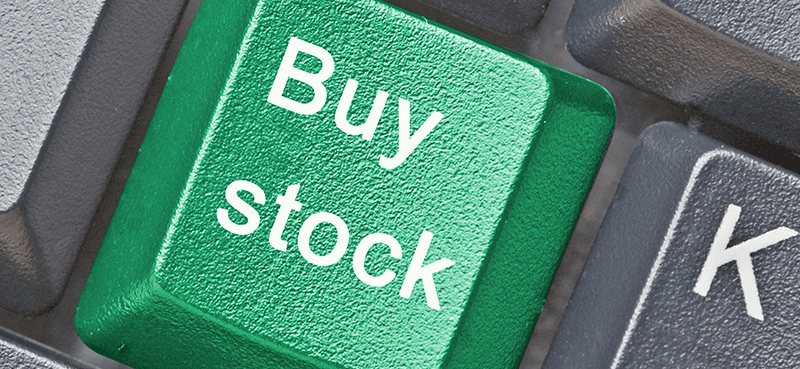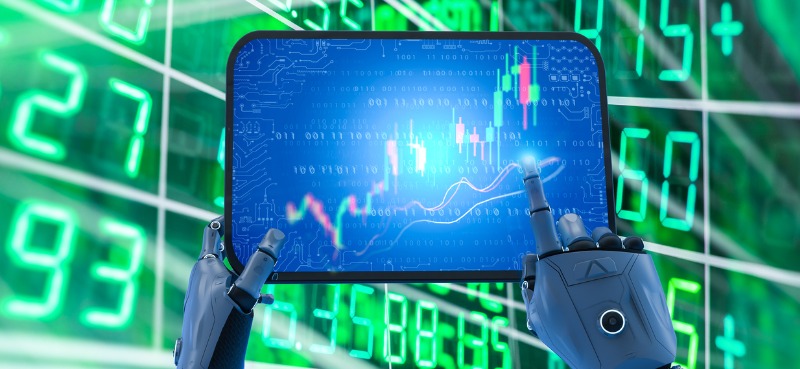Frank is in Las Vegas attending the Consumer Electronics Show (CES)… So I, Daniel, am filling in today and tomorrow. Frank will be checking out the latest tech gadgets from thousands of companies… So be sure to follow his trip on YouTube and TikTok.
I recap the market’s rough 2022… and highlight the critical choice investors need to make as we start 2023: Are you betting on a hawkish Federal Reserve… or on Wall Street’s optimistic expectations? I also explain why we’ll see a weird market for the first few months of this year… and what data/events you should be watching out for.
Next, I take a fresh look at the energy sector, which crushed the market in 2022. I explain why energy stocks have a lot of room to run in 2023—even after their strong performance last year… and why oil prices could spike following the Chinese New Year.
Crypto stocks are rallying after Coinbase (COIN) agreed to pay a $50 million fine to the New York State Department of Financial Services. I break down why the settlement is a big deal… and why it paves the way for long-term growth in the crypto industry.
- How long is too long to spend in Las Vegas? [0:30]
- Recapping the stock market’s volatile 2022 [3:20]
- The critical choice investors must make in 2023 [7:00]
- Why energy stocks have a lot of room to run [16:00]
- Why crypto is rallying after Coinbase’s $50 million fine [23:00]
Wall Street Unplugged | 989
How Coinbase's $50 million fine clears the way for crypto growth
Announcer: Wall Street Unplugged looks beyond the regular headlines heard on mainstream financial media to bring you unscripted interviews and breaking commentary direct from Wall Street right to you on Main Street.
Daniel Creech: Hap, hap, Happy New Year, everybody. Greetings, folks. Welcome. It is January 4th, 2023, and you are listening to the Wall Street Unplugged podcast, normally hosted by the one and only Frank Curzio. However, starting the new year, Frank is out at the Consumer Electronics Show, the CES, where he attends every year that they don’t outlaw you for COVID restrictions. Send Frank an email, follow him on Twitter, TikTok, our Curzio Research YouTube channel. He will be exploring all kinds and everything tech, interviews with different booths and companies, trying out gadgets. Regular listeners will remember he plays ping-pong against robots, uses underwater devices to swim quickly, has a lot of fun, works hard, long hours, but it’s Vegas. Can’t feel sorry for anybody going to Vegas for work.
Daniel Creech: I love that, and I would like to take a quick poll to start the new year, daniel@curzioresearch.com, daniel@curzioresearch.com. How long can you stay in Vegas for and not be miserable? The average answer that I get is a weekend or a long weekend. A handful of people can stay five days, maybe seven days. I am the outlier in this. I think Vegas is the absolute most wonderful place, simply because it offers everything in an area, meaning you can do or go watch amazing shows, or listening to a street band, or somebody just with a guitar trying to make it. You can go to the finest and most expensive, luxurious dining somewhere on the strip or in a high-rise casino, or you can go get fast food. You can carry a cocktail or adult beverage anywhere you go. Obviously, I’m a big fan of those rules, obviously, in moderation as well.
Daniel Creech: Anyway, I actually thought about moving to Vegas when I was out in Arizona, but fate brought me to the island to podcast and to help individual investors in our gladiator-like environment. To close out the New Year… Well, actually, programming note, Frank, at the CES, he’s going to… We’re going to catch up a little bit later today. I will also be on tomorrow’s podcast for Thursdays. And because of programming schedules, and Frank’s taking some of the team to Vegas to record, and get a lot of great material at the CES, I’ll be doing that a little earlier than normal. However, you will get it on regular scheduled time, and I’ll update you with what Frank is up to as of yesterday and today, wandering around Las Vegas.
Daniel Creech: I’m going to do a quick recap on 2022 in the stock market because there’s some excellent… I did a lot of reading over the break, and there’s some excellent articles recently in the Wall Street Journal. And I want to paint this picture of, hey, here’s what happened. Everybody’s already lived through 2022. It was a down year, et cetera, et cetera. But going forward, there’s just an interesting narrative of optimism, and that’s okay. We’re not negative people just to be negative here, but there’s a lot of optimism in the markets going forward. And most of that’s natural. I’ll get to that from FactSet in a second.
Daniel Creech: I just want you, the individual investor, to use the turning of the calendar to think through, think about the next quarter, and the next six months, and the next year in steps because you don’t want to be always reactive and shocked about what’s coming down the pike or pipe, however you say that. I heard that on the radio, people going back and forth and getting it wrong. And we want to use this investor sentiment, and I’m armed here with a whiteboard and some stack of papers here. Hopefully, this comes across great. Send me your feedback, daniel@curzioresearch.com. And then, a few more things to think about over the next year.
Daniel Creech: So, from the Wall Street Journal, over the weekend, stocks log worst year since 2008. You don’t want to say 2008, that great financial crisis. Everybody remembers 2008. Stocks tumbled, bonds were hit by their worst selloff ever, and cryptocurrencies were eviscerated. The S&P fell 19% for the year. The Dow Jones Industrial Average dropped 8.8%, and the Nasdaq, all things tech, the former wonder child of the stock market, got hit by 33%. Markets log their largest declined since 2008. The 10-year treasury note, which influences everything from mortgage rates to student, debt climbed to 3.8, up from a 1.4 at the end of 2021.
Daniel Creech: Now, there was a couple of misunderstandings here leading to the market volatility and downturn. Numero uno was the Fed chair and Fed policy board, Federal Reserve Board, calling inflationary transitory, which proved to be totally incorrect. Now, they’re sticking to their guns of fighting it by all means necessary. After Russian’s invasion of Ukraine, nearing the end of February and into March, energy prices shot up over or inter oil was around 130 a barrel briefly. And while inflation and oil prices have subsided, it remains stubbornly high, 40-year highs.
Daniel Creech: The takeaway from this article here about stocks logging the worst year since 2008, and they highlight some, the FAANG stocks, Apple, Facebook, now Meta, Amazon, all getting crushed. Tesla down over 60%, Bitcoin down over 60%, bankruptcies throughout… Not to mention the FTX debacle. I’m not talking about that today. The takeaway from this is that at the end of this article, I’ve highlighted where it says, “Bond traders are betting on the Fed pivoting from raising rates to cutting them as early as next year,” meaning later on in 2023. And they’re interviewing different people. And Robert Perelli, who’s the head of global policy research at Piper Sandler, he has a good point in saying, “At the moment, neither the stock market nor corporate debt appears to be pricing in the possibility of prolonged pain.” Now, why do I end? And the takeaway is on the bond market, investors betting on rate cuts coming as early as the end of this year, and nobody is bracing for prolonged pain.
Daniel Creech: It is by nature that we are optimists, especially analyst, stock market junkies, et cetera. Everybody’s more happy when prices go up versus down. The reason I bring up this prolonged pain is because Frank and I had talked about… And Frank did an excellent job at the end of last year talking about how earnings estimates for the market are still significantly high. And FactSet, which is a great data research company, as of the 5th of December, FactSet had the S&P earnings per share for 2023 at 232 and 53 cents. Let’s just round down, $232. That would be an all-time record high. It’d be a growth of a little bit over year-over-year. However, when you take into fact the easy money policies are over, the Fed’s continuing to raise rates and tell you they’re going to keep raising rates about another percent, we’re between four 4.25 and 4.50 at the Fed funds right now. They’re talking like they’re going to get that to five and a half, so another full percentage point higher, and then, keeping them there.
Daniel Creech: Something has to give. You have the Fed that was telling you inflation was transitory. They were wrong. They admitted that. Now, they’re telling you pedal to the metal to fight inflation at 40-year highs, and they’re not going to stop. They’re going to five and a half. They’ve hinted at raising that high rate to a little higher than five and a half, and I say they, meaning different Fed members that speak, Fed governors. They’re telling you now, we’re going to keep raising interest rates for the short-term, and then, keep them elevated for the rest of the year, and the market is betting on the difference.
Daniel Creech: This comes back to the old saying, “Don’t fight the Fed.” I’m simply pointing this big picture out to you to explain that the path of least resistance, the easiest path for markets currently is lower. That doesn’t mean that it’s tanking, and the stock market’s going to go down 50%, but that means that basically, for the first quarter, January, February, and March of this year, you can go to sleep, you can hang out, you can chill, kick up your feet and relax, everybody. Start the new year off in a relaxed, comfortable attitude. Why do I point all this out? Because FactSet is at 232. Other estimates here, such as Bank of America, Satori, which is run by Dan Niles. He was just on CNBC the other morning. And Goldman Sachs and J.P. Morgan have come out with price targets.
Daniel Creech: Now, Frank has talked about, he thinks the S&P 500 earnings are going to be under 200. So, instead of $232, they’re going to be under 200 or around 200. Bank of America has the S&P 500 ending at 4,000 for 2023. It closed at 38, 34. That’s just a couple percent higher. The reason I’m telling you this is because Bank of America and Goldman Sachs, basically, and J.P. Morgan have price targets for the S&P right around the 4,000 mark. So, let’s round up and say that’s 5% from current levels, give or take. That’s over a 12-month period. We’re going to have lots of economic data, jobs reports comes out this Friday. Consumer Price Index, we’re going to have inflation data, all kinds of data coming out over the next year, obviously. And the market’s just going to bounce around, and by these guys… And listen, nobody has a crystal ball. You have to give them credit for making projections and predictions. But consensus for those Wall Street banks are just four to 5% higher from current markets over a year’s time.
Daniel Creech: And the reason I’m telling you to basically take the first month off is because the Fed meeting for 2023, the first Fed meeting is not until next month. So, we have some January data we have to get through, and there’ll be some Fed speakers, and comments, and things like that that’ll move markets. But the next meeting isn’t until February. Big revisions and job data like we got as a under the radar December 16th from the Philly Fed revising all the jobs from quarter two, April, May, June period, for everybody following along.
Daniel Creech: And so, the revised jobs are running at five-, six-month lag time. Yet, everybody is just going to what, continue? Traders are going to continue to kick around indices higher and lower until we get something of meat. What can the individual investor do to take away all this or to prepare for all this? Is just understand that a ton of volatility is coming down the pike. There that is again. Earnings estimates, in our opinion, in my opinion, are still too high. They’re going to look to be revised lower, and that’s okay. That happens. Frank’s done an excellent job of talking about that. Continue to build cash, continue to look at quality and quality stocks, and continue to look at Moneyflow Trader, run by Genia Turanova right here at Curzio Research, to not only protect yourself but to make a killing and to make outsize returns in a very short amount of time off the volatility and downturns in the markets.
Daniel Creech: So, for the first quarter, again, we have to wait for several things. And going into over the next year, I want to see how something transitions or how the market weighting transitions. From Tuesday, January 3rd’s Wall Street Journal, the year-end review and outlook section, the front page, R1, for those of you following along with paper in hand, they have a couple of really cool charts on the front page. They have the S&P 500 sector weighting at the end of each year for 2022 and 2021, and they have the S&P 500 ranking by market value, the top 20 companies at the end of each year, again, for ’20 and ’21.
Daniel Creech: The most important thing here is to show the sector weighting. Technology in 2021 was over 25% of the S&P 500. Now, obviously, 25% is a significant amount. That was in 2021. And in fact, by this graph, you would guess it was closer to 30 than 25. So, that’s 2021. In 2022, I’ll round down. Technology went from around 30% to 25%. That’s the big dog. Obviously, that’s moving lower, and that’s understood. Us individual investors understand when the sector, the tech sector, the NASDAQ sector was down over 30% for 2022, when a lot of those companies are going to get hit, it’s based on market cap, how big they are in weighting. So, therefore, the weighting goes down as those stocks and indices move lower.
Daniel Creech: Energy, which I’ve been extremely bullish on for a while now and will continue to be, I’ll talk more about that tomorrow. Energy in 2021 was less than 5%. We’ll call it around 3%, gauging by this graph on the paper. In 2021, energy made up around two and a half to 3% of the S&P 500 sector weighting. Fast forward to the end of 2022, and that’s just over 5%, so about 100% increase. Yet, you still have technology being significantly weighted and energy being significantly underweighted.
Daniel Creech: The number two spot is healthcare also dropped a little bit. Or, excuse me, healthcare gained from 2021 to 2022. Financials did as well. Consumer discretionary dropped a little bit. The big takeaway there is that even though energy has had a massive run, up over 50% in 2022, there is still a lot of room for it to be weighted more into the S&P 500. Those earnings are going to continue to be robust as prices stay elevated versus previous prices over the last three years, and that is all very bullish for that sector. Keep in mind, we’re going to see earnings estimates come down as a whole. We’re going to see a lot of volatility around what is a very tight market for bank estimates and S&P 500 returns, and we have to be cautious around all data coming up over the next year.
Daniel Creech: The other reason or another reason I want to talk about taking the first quarter off is because one of the big growth catalysts for markets is China reopening and getting over their zero COVID policy. And they’ve done a lot of 180s in just the past couple weeks. And this is a solid article also from yesterday’s Wall Street Journal. It says, “After three years of zero COVID economic disruption, many Chinese businesses awoke to a happy new reality in December. No more restrictions. The world’s second largest economy continues to be volatile around everything because they were just shutting down on any positive test.”
Daniel Creech: A manufacturer, one of the manufacturers in the Shenzhen Industrial Company said that 90% of his staff was sick over two-week period in December going into January. One street vendor, they interview a couple different businesses or business manufacturers, owners, managers, et cetera, and they all say the same thing. Listen, this virus is making its way through China at a rapid pace, and everybody seems to be getting sick, almost everybody, at the same time, which is really causing a lot of disruptions in supply chains, products, et cetera. Not to mention you have to balance all that with economic demand, which is trending lower as inflation continues to be high and rates continue to be risen, rose. Rates continue to be hiked by the Fed.
Daniel Creech: What stood out to me in this article is COVID is keeping customers away from some businesses and districts. A gentleman who sells rice noodles in one of popular districts for workers, and I’m being general here because I don’t want to butcher all these names and be disrespectful. This gentleman said, “Delivery and walk-in customers totaled about 90 on Wednesday,” and this is a couple weeks ago. 90, and that was the same about on Thursday. So, Wednesday and Thursday, this gentleman, who is a street vendor for what we would think of over here, had 90 customers on Wednesday and Thursday. That is lower than the average of, say, 500. So, from 500 to 90.
Daniel Creech: The takeaway here is that it won’t remain 90 forever. It was 90 now, and that’s the big initial shock, and you see the drop. It will take time to get through and to get people normal and okay with going out again because three years is an extremely long time to be not allowed to do anything and under the rule of a thumb. And just because you get that curtain lifted or you’re ungrounded from your parents, so to speak, maybe you run right back into the crowd and do the things you were doing or maybe you take some time. And the Chinese New Year is at… It changes around here, but if memory serves me correct, it’s the 22nd of this year through February 3rd, or something like that.
Daniel Creech: But anyway, the article goes, and they’re interviewing analysts and workers over in the different China areas where the COVID outbreak has happened, and they say, “Listen, after the Chinese New Year,” meaning that period from late January into February, “maybe we can get some more stabilization.” That’s another reason for you individual, us individual investors to think about over the next couple of months.
Daniel Creech: So, China is not reopening in a massive way to cause demand. Oil and energy have continued to stumble around those headlines. Energy was down earlier today, again, on this Wednesday, January 4th because of not COVID restrictions, but the demand that’s not there yet, not back to pre-COVID levels. Because even though you lifted the restrictions, now, people are dealing with the virus causing supply chain issues, worker issues, and et cetera. This too shall pass. My point is that, that is a huge stat to go from 500 customers a day to 90. But again, I will continue to try to update you on this going forward over the next couple weeks. I doubt if that same gentleman makes it back to the Wall Street Journal, but we can use the internet of things in all things to look and figure that out.
Daniel Creech: Back to what to expect for this year as I wrap up here. You have to think about in terms of what are you betting on? Are you betting on the Fed lying to you, for lack of a better term, and they’re going to cut rates at some point later in this year, which is not in their wordage or language? Or are you going to bet on optimistic market analyst being correct? That’s question numero one. And number two is if the Fed doesn’t do what it says, and if the Fed does reverse course, and change by not only pausing and keeping rates elevated, but actually cutting them this year in 2023, the question is why are they doing that?
Daniel Creech: Are they doing that because revised data, which I’ll get into more tomorrow, and we’ve touched on in the past, was incorrect, and therefore, maybe the situation around inflation is better than expected currently right now? Or is it because something in the financial system cracks, meaning we have a huge selloff or a liquidity crunch, liquidity crunch, excuse me, in the bond market, on the treasury side of anything? Do we have a world event, such as an escalation in Ukraine, in China, between Ukraine… Or, excuse me, between Russia and Ukraine. Does somebody else join the war? Does anything happen in the Middle East? What would cause them to turn about and do another 180 so quickly? That’s something to think about. And if you think it’s going to be because something cracks, you definitely want to have exposure to long-dated puts through Moneyflow Trader, and also, have some exposure to gold.
Daniel Creech: Gold is creeping up and doing well right now, despite still a relatively strong dollar, excuse me. And I think that there is buzz around gold because going forward into this year, you’re going to have a lot of uncertainty and a lot of cracks in the financial system. And in my opinion, I’ve been wrong about gold for different reasons in the past, but in my opinion, I do think gold is going to shine as you get this wariness of financial markets across the globe. I know that’s very easy to say, but when you have a change in policy from our Fed and global Fed central banks, it’s not a huge bet, in my opinion, to think that you’re going to have a lot of volatility and screwiness to cause people to get nervous, and that is when gold will shine.
Daniel Creech: I love doing this podcast because there’s breaking news in crypto as just before I started recording, and I want to touch on it a moment. And that is the revolving door that you see around SEC government agencies, and corporations, and businesses. And Coinbase, which has gotten absolutely annihilated lately along with the overall crypto market and everything risk on, news broke earlier today, and Coinbase was rallying about six or 7% based on their blog post, which reads, “Coinbase and NYDFS reach agreement to resolve compliance investigation. The New York Department of Financial Services,” that’s the NYDFS, “has announced consent order focused on certain historical shortcomings in Coinbase’s compliance program.” Obviously, following the FTX debacle and thievery, or alleged thievery, going on there.
Daniel Creech: Compliance issues, the handling of customers’ money, what’s going on, who knows what, who has access to what? KYC, know your customer, anti-money laundering rules, regulations, AML. The big takeaway here and why is the stock rallying after they just announced that the consent order includes a $50 million penalty and a commitment from Coinbase to continue our investments and compliance program. So, what does Coinbase do? Coinbase gets with this department. They go over all their stuff. They filed or they disclose this, as you have to as a publicly traded company. They disclosed in their 10K over 2021 that this investigation was going on. So, $50 million in penalty and a $50 million commitment from Coinbase in investing in compliance program investments over the next two years.
Daniel Creech: The reason that this is important and the reason that the stock is popping a little bit… Again, I saw it as high as 7% or lower earlier. I think it’s up around 4% now is because, as Frank always says and continues to pound into our heads, is learning individual investors: Uncertainty is a killer for markets. And I can dig into the details later on this. The takeaway here is, hey, we’re going to move past this. We’re going to pay a fine. They have plenty of cash. They can afford that. And now, you’re not in the targets or the crosshairs as much from this agency as you were. You’ve amended. They want to work together. They’re all going to say the right things about going forward and doing what’s best for the individual and the community as a whole, yada, yada, yada. That’s all well and good.
Daniel Creech: The takeaway from investors is this is now behind you. You can pay the fine, and you can move on, and this will help with further investigations. Regulation, which is coming to this space, no doubt at some point, although a little nervous, it won’t happen in 2023 just because of a split house. And it takes a lot of time for anything productive, let alone smart, to happen in Washington.
Daniel Creech: All right, folks. I will catch up with the one and only Frank Curzio a little bit later today. I will have an update for you in tomorrow’s podcast for the Consumer Electronics Show and all things that Frank is doing. Take away from today is expect a lot of uncertainty and market volatility. And basically, the first month, we’re just going to listen to news and headlines, and we’re going to see how everything plays. So, hold tight. It’s going to be a wonderful prosperous year in 2023, and it has to be. Why? Because ’23 is Michael Jordan’s number, and any year that has that will be a good one. Cheers, everybody. We’ll talk to you tomorrow. Thank you.
Announcer: Wall Street Unplugged is produced by Curzio Research, one of the most respected financial media companies in the industry. The information presented on Wall Street Unplugged is the opinion of its host and guests. You should not base your investment decisions solely on this broadcast. Remember, it’s your money and your responsibility.
P.S. Get some of Frank’s favorite plays for this tumultuous market—from energy to cryptocurrency, and much more—by joining The Dollar Stock Club today.
You can get immediate access to the entire portfolio—for just $4.
























